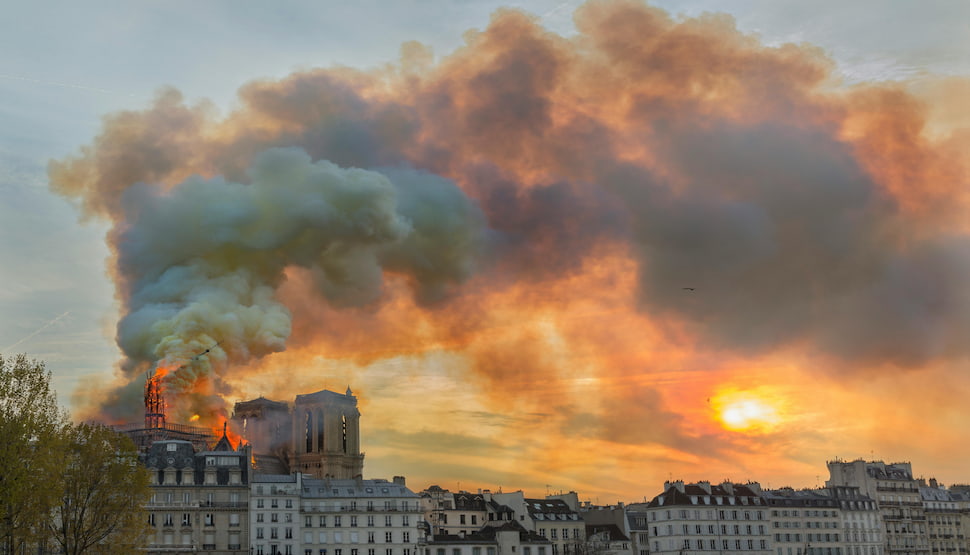Four essential principles to improve fire resilience in historic buildings
Improving fire resilience for historic landmarks

Historic buildings are a vital part of our cultural heritage, showcasing the history, architecture, and craftmanship of past generations while offering educational value and economic benefits. Beyond these factors, it’s also important to preserve such buildings from an environmental and sustainability point of view, as conserving historic structures minimizes the environmental impact of demolition and new construction. However, tragic fires such as the 2019 Notre-Dame Cathedral blaze and the recent fire at the historic Copenhagen Stock Exchange underscore the substantial risks these buildings face, especially during renovation. For historic properties, proactive fire protection is vital to safeguard against huge potential losses, as these buildings were often initially built when fire safety was less of an emphasis.
But how can this process be best managed? FM outlines four foundational principles to guide fire protection efforts in historic buildings:
1. Embrace Advanced Automatic Sprinkler Systems
Automatic sprinklers are a cornerstone of active fire protection. For historic structures, modern sprinkler systems (especially those using water mist) offer a crucial balance between effectiveness and preservation. Unlike traditional sprinklers, water mist systems are compact with low-impact designs - ideal for historic sites where preserving the building's integrity is paramount. Past concerns about accidental activation or water damage are less relevant today; FM Approvals certified systems, in particular, are highly reliable with activation only in fire-affected areas. As an active suppression measure, sprinklers provide invaluable protection while requiring only minimal structural intrusion.
2. Prioritize Safe Renovation Practices: Limit Hot Work
Renovation of historic buildings often necessitates hot work like welding which can pose significant fire hazards. Although these processes may be unavoidable, proactive risk management is essential to ensure such activity is conducted in a safe and effective manner. Building operators should collaborate with contractors to reduce hot work wherever possible by using screw connections or pre-cut materials, for example, eliminating the need for on-site cutting. When hot work is unavoidable, strict precautions are important. Fire watch personnel should monitor the area during the work and for up to three hours afterwards to ensure delayed ignition risks are mitigated. By diligently managing hot work risks, operators can drastically reduce fire hazards, ensuring that preservation efforts do not inadvertently place the historic structure at risk.
3. Expand Fire Protection Strategies to Future-Proof Protection
In protecting historic buildings, compliance with current fire safety regulations should be viewed as a starting point. Given the significance of these buildings, operators should adopt forward-thinking fire protection strategies that start with minimum requirements and expand to anticipate future regulatory changes and improving long-term resilience. Unlike industrial facilities with planned lifespans, historic buildings are intended to last indefinitely; the fire protection strategies adopted should reflect this ambition. Expanding beyond regulatory standards will only help reduce fire risk, and also minimize the potential need for costly future retrofits, creating a more sustainable approach to preservation and providing superior protection for these culturally and financially valuable assets.
4. Modernize and Maintain Electrical Systems Diligently
Electrical issues are among the leading causes of fires in historic buildings, where outdated or poorly maintained electrical systems can turn minor faults into devastating events. Modernizing electrical infrastructure and establishing a preventative maintenance program are critical steps for building operators. Regular inspections to check for overheating, wear, and connection integrity are essential, as is ensuring that electrical systems are appropriately sized, protected, and suited to the building's unique needs. Training employees on safe operation and emergency procedures further enhances safety. Additionally, new technologies, like remote monitoring systems, can allow for rapid response, enhancing fire prevention while reducing maintenance costs.
Historic buildings are intrinsically more vulnerable to fire due to their age, structural composition, and the complexity of maintaining them. However, through modern fire protection strategies, these irreplaceable structures can be effectively safeguarded. Installing advanced sprinkler systems, ensuring stringent hot work protocols, surpassing minimum safety standards, and diligently maintaining electrical systems are all vital steps. As recent incidents have demonstrated, preserving architectural heritage demands proactive, comprehensive fire protection measures.
